Russia's military is advancing on the battlefield in Ukraine, but at home the Kremlin appears to have suffered a number of fiery setbacks that are captured in new satellite imagery: a failed test of a new missile and a wave of Ukrainian strikes that set ablaze arms depots deep inside the country.
Kyiv has launched at least three devastating blows on Russian arms facilities in the past week — two in the west and one in south — demonstrating far-reaching potency as it pushes allies for the ability to do damage even deeper into Russia.
Ukraine launched its daring incursion into Russia's Kursk border region in early August and has been intensifying its attacks on strategic targets inside enemy territory while preparing a peace plan that President Volodymyr Zelenskyy is presenting to the United States this week.
“I think that we are closer to the peace than we think,” Zelenskyy said in an interview with ABC News that aired Monday. “We are closer to the end of the war. We just have to be very strong, very strong.”
Weekend strikes hit arms depots
Satellite images taken Sunday by Maxar Technologies, a U.S. defense contractor headquartered in Colorado, show the aftermath of a weekend attack on an arsenal in the village of Oktyabrsky in the Tver region of western Russia.
The Ukrainian military said Saturday it had recorded fire and detonation at the Oktyabrsky depot. The images show damage to rail lines and missile canisters.
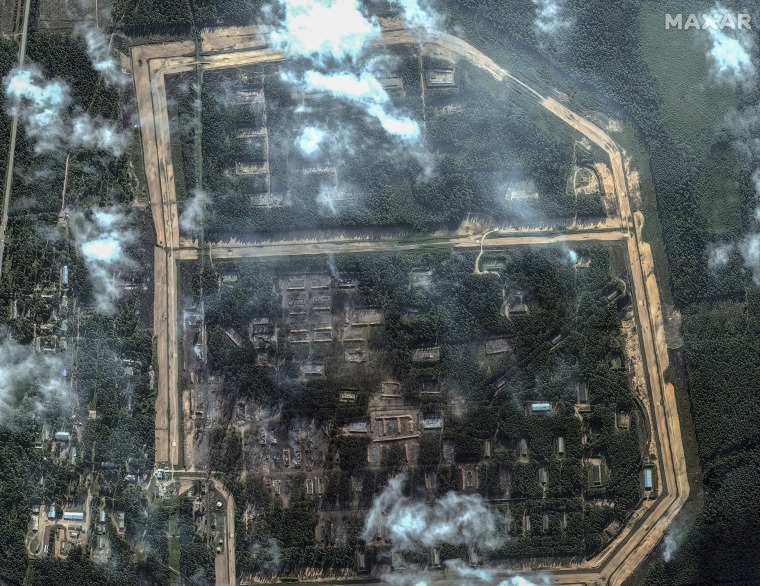
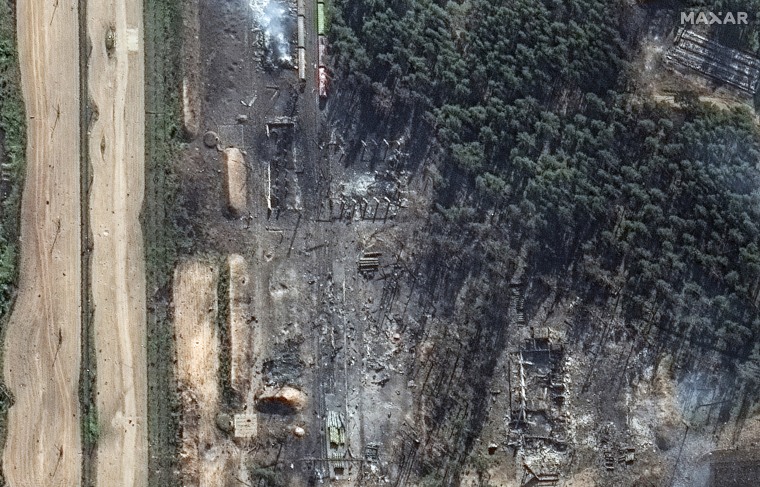
The general staff of Ukraine’s Armed Forces said it had struck another weapons depot in Tikhoretsk in the Krasnodar region in southern Russia, which it said was one of the largest ammunition depots in the country and “one of the key points in the Russian military logistical system."
A train carrying at least 2,000 tons of munitions, including from North Korea, was at the depot during the time of the attack, the statement added.
Russia's defense ministry said Saturday it had downed a total of 101 drones overnight, making it one of the largest Ukrainian drone attacks since the war began.
Without mentioning the depot, regional Gov. Veniamin Kondrtatyev said in a Telegram post that "falling debris of one of them caused a fire that spread to explosive objects." He later said that at least 1,200 people had been evacuated.
“These were depots of Russian tactical missiles and guided aerial bombs,” Zelenskyy said Saturday, following the attack. “It was a significant arsenal.”
Last week another arms depot in the Tver region, in Toropets, approximately 240 miles west of Moscow, was blown up.
The Sept. 18 attack threw up towering fireballs that were visible from space, while the detonations triggered earthquake monitors. Russian state media had previously reported that Moscow was building an arsenal for storing missiles and other explosives.
Satellite images from the area showed plumes of smoke still rising, extensive damage to the facility and destroyed railcars.
Ukraine’s drones had “wiped off the face of the Earth a large warehouse of the main missile and artillery department” of Russia’s military, a source in Ukraine's Security Service told NBC News, adding the attack destroyed Iskander, Tochka and KAB missiles.
The intensity of fires was such that it was picked up by NASA satellites and the explosion was recorded as a 3.2-magnitude earthquake by the Norwegian monitoring agency NORSAR.
Without mentioning the target explicitly, Zelenskyy at the time thanked the military for a “very important result” achieved in Russia.
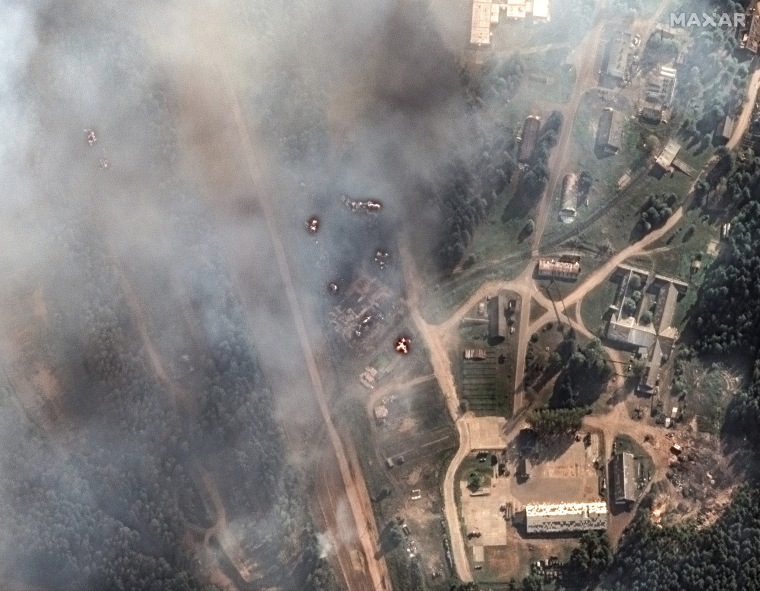
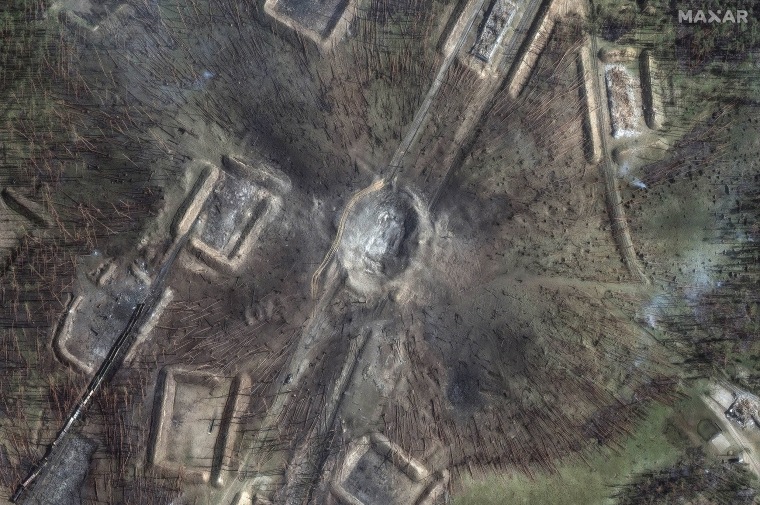
Russia may also have failed to launch its new nuclear-capable RS-28 Sarmat intercontinental missile, according to satellite imagery captured Saturday, which showed a 200-feet wide crater at the Plesetsk Cosmodrome in northern Russia.
The Russian defense ministry has not commented on the missile launch.
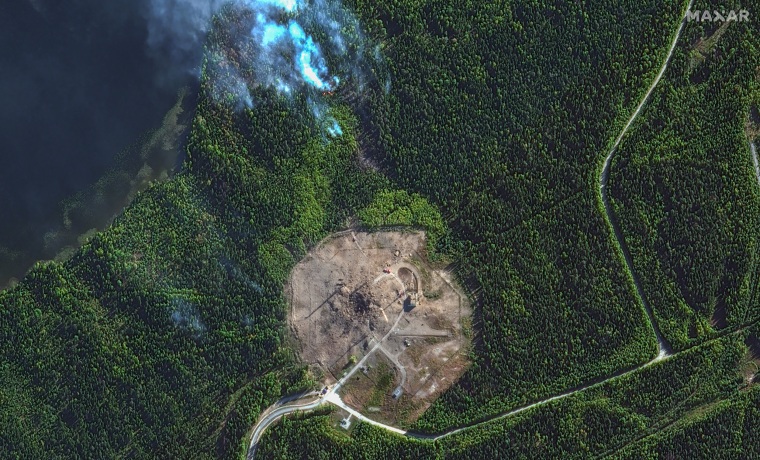
The Maxar images show a broad crater at the launch silo at the Plesetsk Cosmodrome in northern Russia, damage that was not visible earlier in the month.
Arms experts said the images suggested a failed test of the Sarmat, which has been touted by the Kremlin but dogged by setbacks.

